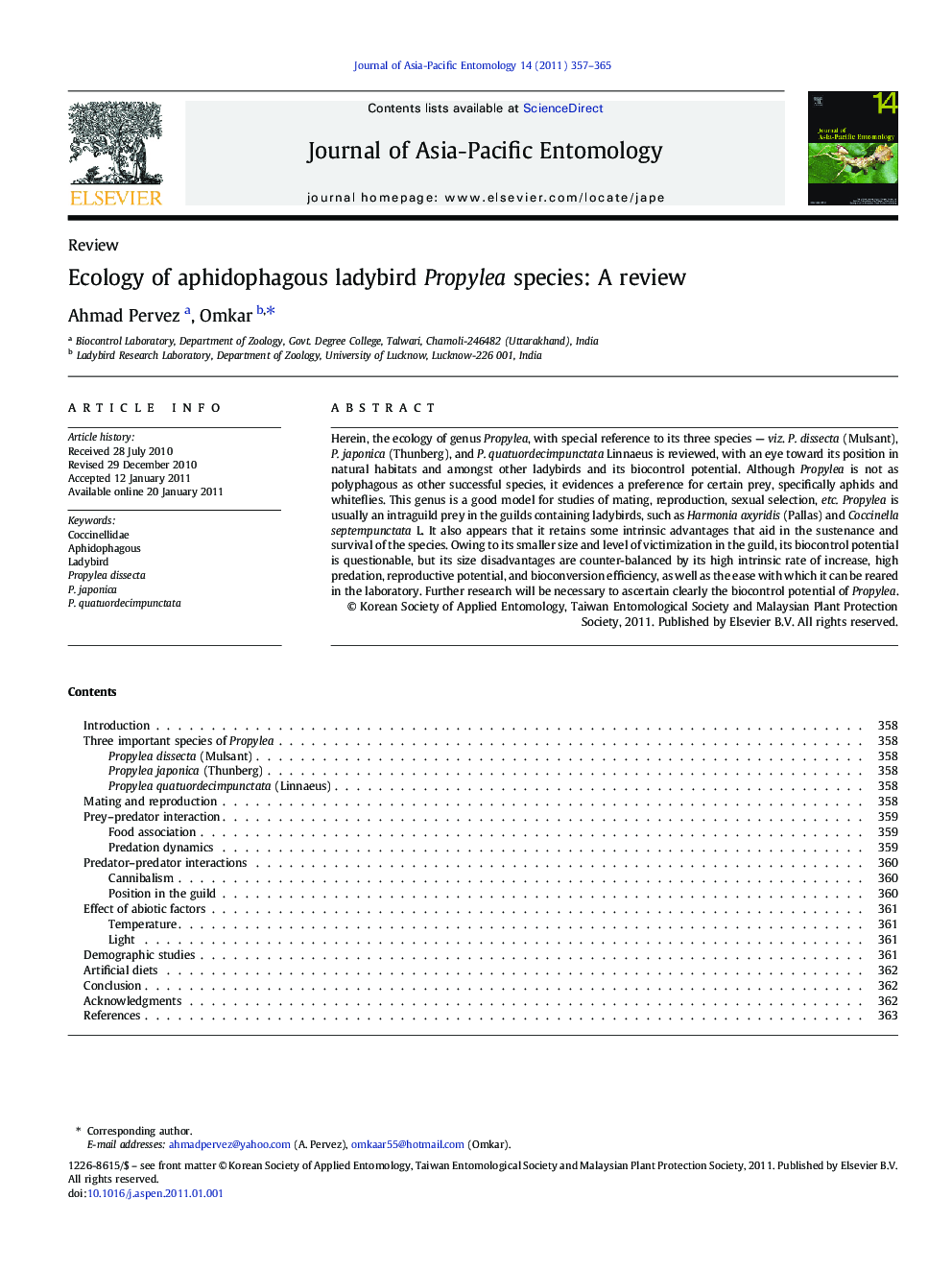| Article ID | Journal | Published Year | Pages | File Type |
|---|---|---|---|---|
| 4524732 | Journal of Asia-Pacific Entomology | 2011 | 9 Pages |
Herein, the ecology of genus Propylea, with special reference to its three species — viz. P. dissecta (Mulsant), P. japonica (Thunberg), and P. quatuordecimpunctata Linnaeus is reviewed, with an eye toward its position in natural habitats and amongst other ladybirds and its biocontrol potential. Although Propylea is not as polyphagous as other successful species, it evidences a preference for certain prey, specifically aphids and whiteflies. This genus is a good model for studies of mating, reproduction, sexual selection, etc. Propylea is usually an intraguild prey in the guilds containing ladybirds, such as Harmonia axyridis (Pallas) and Coccinella septempunctata L. It also appears that it retains some intrinsic advantages that aid in the sustenance and survival of the species. Owing to its smaller size and level of victimization in the guild, its biocontrol potential is questionable, but its size disadvantages are counter-balanced by its high intrinsic rate of increase, high predation, reproductive potential, and bioconversion efficiency, as well as the ease with which it can be reared in the laboratory. Further research will be necessary to ascertain clearly the biocontrol potential of Propylea.
Graphical AbstractFigure optionsDownload full-size imageDownload as PowerPoint slide
